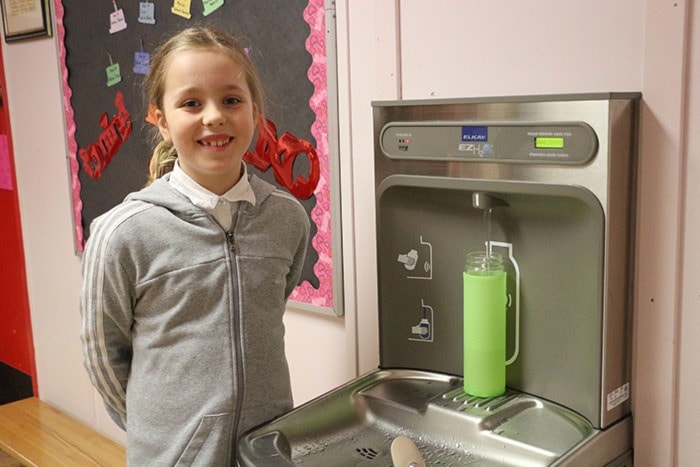The discovery of intolerable levels of lead in four Prince Rupert schools may result in systemic changes.
British Columbia is on its way to joining Ontario as the second province in Canada to routinely monitor metals in schools. In Ontario, schools have to submit a sample once a year to test for lead.
A letter from the Deputy Minister of Education was sent to all superintendents on Feb. 24 at the request of Provincial Health Officer Dr. Perry Kendall asking school districts to “work with local health authorities to establish a plan to evaluate water quality, especially in schools built before the 1989 revision of the BC Plumbing Code restricting the use of lead in potable water lines”.
On Feb. 16 students were sent home with letters informing parents that mitigation measures had been put in place after Northern Health found elevated levels of lead in the water at Pineridge Elementary, École Roosevelt Park Community School, Conrad Elementary and Prince Rupert Middle School.
A long-term management plan is in the works for School District 52. Superintendent Sandra Jones received the Deputy Minister of Education’s letter yesterday and is sorting out the details of the plan, which should include evaluating facilities based on age and water supply, carrying out testing at priority facilities, mitigating risks, regularly re-sampling to verify effectiveness and communicating findings. The schools in the district are already doing manual flushing every morning as part of the mitigation strategy.
“Moving forward we’d like to move into an automated flushing system, but obviously that takes a little bit of time to put into place but that’s where we’re headed,” Jones said.
The schools are also in the midst of replacing all the water fountains with more “robust fountains that filter everything” Jones said adding the filters cost $300 a piece. “But it’s what we have to do.”
School District 52 will also set up routine water testing.
“We should have looked at this sooner,” said MLA Jennifer Rice who added that she is frustrated with the lack of education over the issue.
A Kitimat school found unacceptable levels of lead in its water in 2012. The BC Centre for Disease Control published a report in 2014 to follow up on the incident. The report stated that “younger children may be particularly vulnerable due to their relatively higher exposures and absorption rates and greater neurological vulnerability.”
The report’s findings highlighted “the need for routine monitoring of drinking in schools” and that schools should flush their pipes before each school day.
The incident in Kitimat and the report didn’t cause enough steam to fire up concrete change. It wasn’t until two new medical health officers, Dr. Raina Fumerton and Dr. Sandra Allison, began working for Northern Health that the water was tested.
“Ensuring safe drinking water for all people that live in the north to me is an extremely important priority,” Allison said. The water quality committee for Northern Health was working with aggressive water and trying to understand the impacts to the northern regions. They reached out to the schools to get current testing results.
Allison said the biggest concern is young children and pregnant women as lead consumption can affect development. Even if the schools provide filtered water, lead can be found in water sitting stagnant in pipes in homes built before 1989.
General manager of Saanich Plumbing and Heating in Prince Rupert, Jerry Kurka, said approximately 60 per cent of domestic pipes in Prince Rupert homes are made with lead or copper. Northern Health recommends people run their taps until the water is cold to get fresh water from city pipe.
Allison said this is not the first time there has been an issue with lead and she wants it to remain top of mind. She suggested having a lead awareness week once a year to remind people to flush their taps if they live in older homes.
The routine testing at the schools will remain the responsibility of the school district, but Northern Health will be an ongoing resource in the process.
“When they get their testing we can help with the interpretation,” Allison said.
